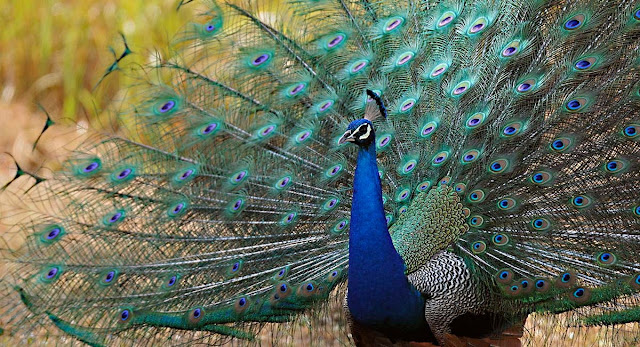Wild life animal's in India
The wildlife in Asian nation includes a combine of species of various styles of organisms. Apart from a few of the main stock like cows, buffaloes, goats, poultry, and camels, India has associate degree astonishingly wide selection of animals native to the country. It is home to Bengal tigers, Indian lions, deer, pythons, wolves, foxes, bears, crocodiles, wild dogs, monkeys, snakes, antelope species, varieties of bison and also the Asian elephant. The region's rich and various life is preserved in 120+ national parks, 18 Bio-reserves and 500+ life sanctuaries across the country. India has some of the foremost biodiverse regions of the planet and hosts 3 of the world’s thirty five variety hotspots – or treasure-houses – that's the Western Ghats, the Eastern range of mountains and Indo-Burma. Since India is home to a variety of rare and vulnerable animal species, wildlife management in the country is crucial to preserve these species. India is one of the seventeen megadiverse countries. According to one study, India on with different sixteen mega various countries is home to concerning 60-70% of the world's variety. India, lying within the Indomalaya ecozone, is home to about seven.6% of all class, 12.6% of vertebrate, 6.2% of reptilian, and 6.0% of flowering plant species.
wild india
source:
A female Indian elephant in Nagerhole parkland. India has the largest population of Indian elephants.
Many Indian species area unit descendants of taxa originating in Gondwana, to which Asian nation originally belonged. Peninsular India's ulterior movement towards, and collision with, the Laurasian landmass set off a mass exchange of species. However, volcanism and climatical amendment twenty million years past caused the extinction of several endemic Indian forms. Soon thenceforth, mammals entered India from Asia through 2 zoogeographical passes on either facet of the rising Himalaya. As a result, among Indian species, only 12.6% of mammals and four.5% of birds area unit endemic, contrasting with forty five.8% of reptiles and fifty five.8% of amphibians. Notable endemics are the Nilgiri leaf monkey and the brown and carmine Beddome's batrachian of the Western Ghats. India contains 172, or 2.9%, of IUCN-designated threatened species. These include the Asian elephant, the Asiatic lion, the Bengal tiger, the Indian rhinoceros, the mugger crocodilian, and the Indian white-rumped vulture, which suffered a near-extinction from ingesting the carrion of diclofenac-treated bovine.
wild india
source:
In recent decades, human encroachment has posed a threat to India's wildlife; in response, the system of national parks and protected areas, first established in 1935, was substantially expanded . In 1972, India enacted the life Protection Act and Project Tiger to safeguard crucial habitat; more federal protections were publicised in the Eighties. Along with over 515 life sanctuaries, India currently hosts eighteen region reserves, 9 of that area unit half of the planet Network of region Reserves; twenty six wetlands area unit registered underneath the Ramsar Convention.
The pipal fig tree, shown on the seals of Mohenjo-daro, shaded Gautama Buddha as he sought-after enlightenment. The varied and rich life of Asian nation has had a profound impact on the region's well-liked culture. The common name for wilderness in Asian nation is jungle, which was adopted into the English language. The word has been also created far-famed in The Jungle Book by author. India's wildlife has been the subject of various different tales and fables like the Panchatantra.
source:


